1. European Starling
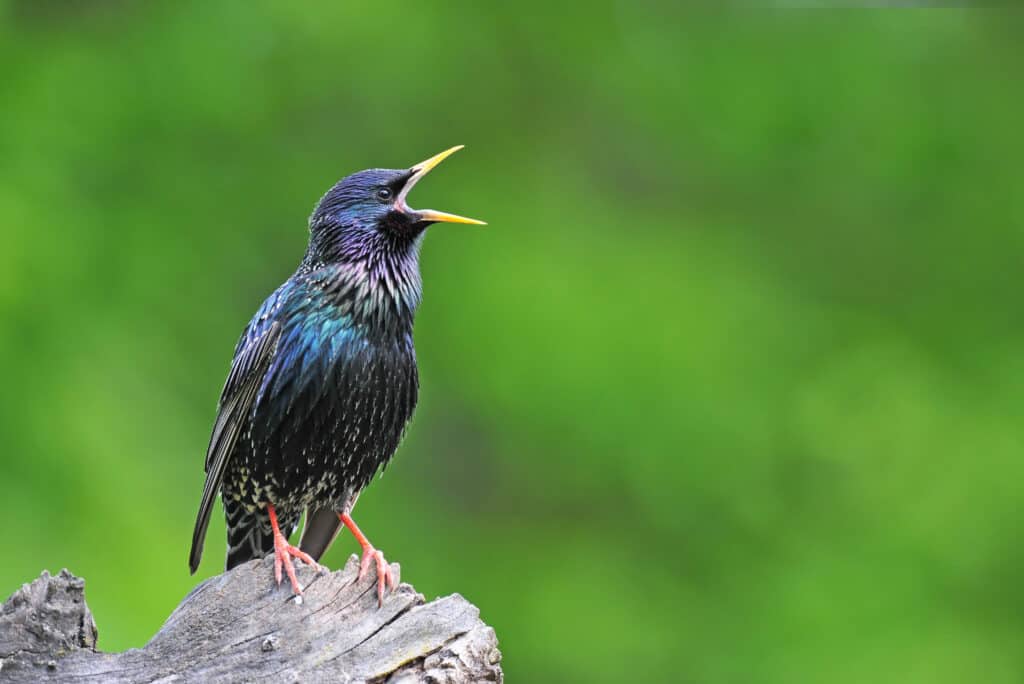
Characteristics: The European starling is one of the most well-known purplish birds in the United States. Though these stocky birds with long bills and short tails appear black, they actually feature a purple, blue, and green glossy sheen. It is best seen in the summer sun.
2. Purple Martin
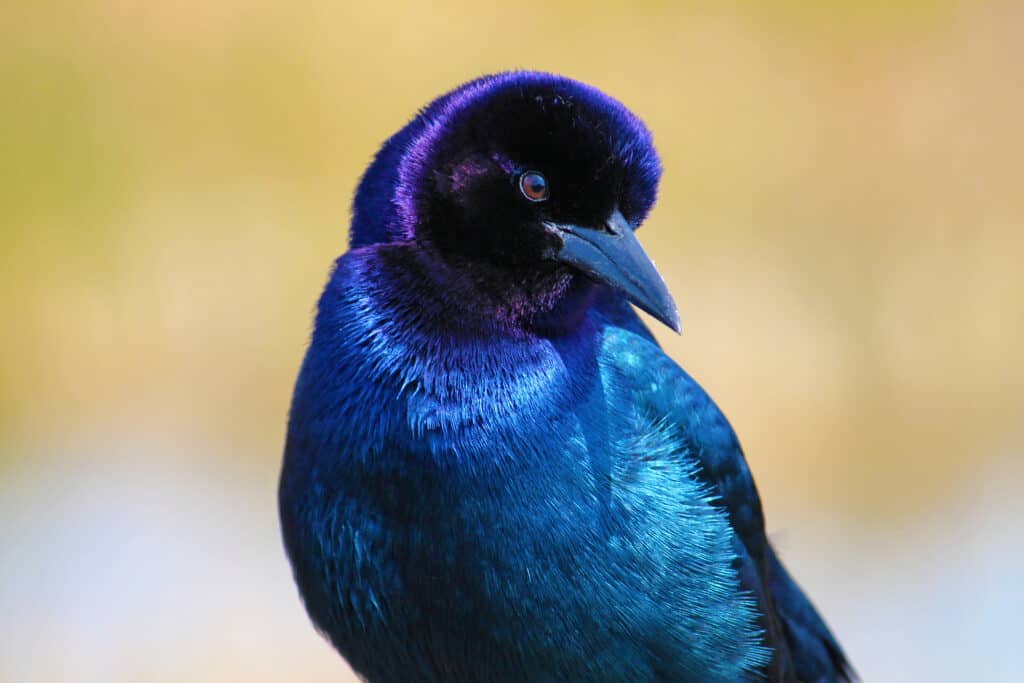
Location/Habitat: These long-distance migrants breed in the Eastern United States and Canada before migrating to South America for the winter. You can find them in open fields, wet meadows, parks, and towns.
3. Purple-Breasted Cotinga
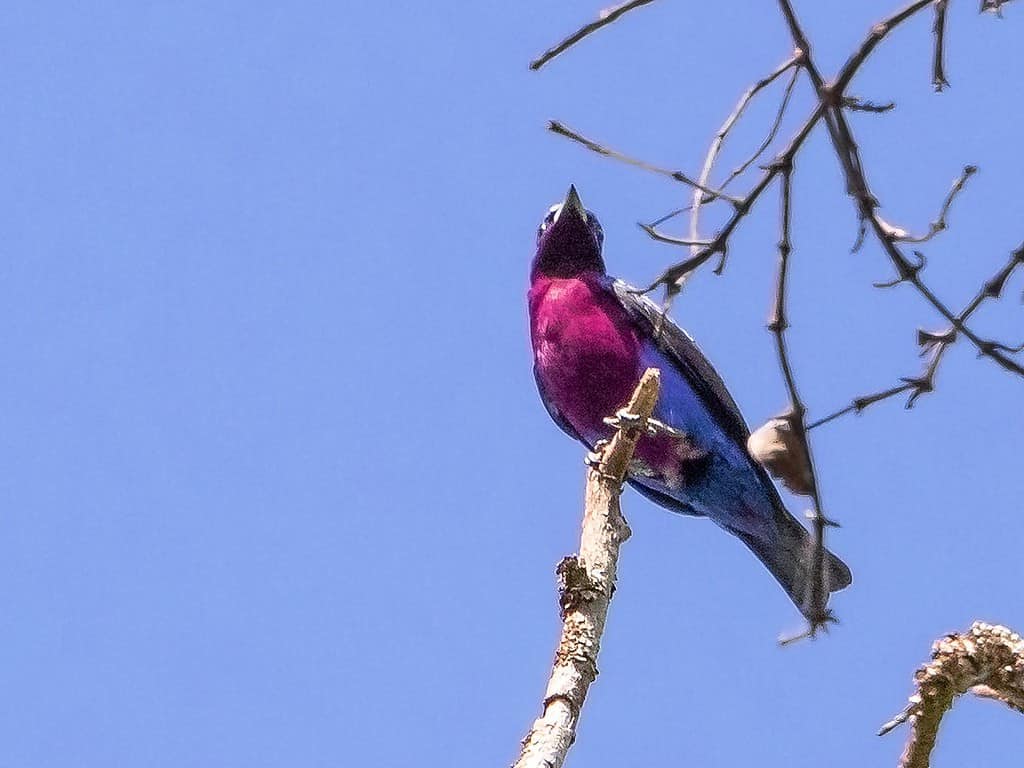
Characteristics: The purple-breasted cotinga is a medium-sized tropical bird with a plump body and a small head. These brightly colored birds are striking because of their turquoise to blue, purple, and black plumage. But only the males are colorful. Females are brown with spotted breasts.
Location/Habitat: They are found in seven South American countries, including Brazil, Colombia, Venezuela, Guyana, Peru, French Guiana, and Suriname. These cotingas live in the rainforest canopy of moist lowland forests.
4. Violet-Backed Starling
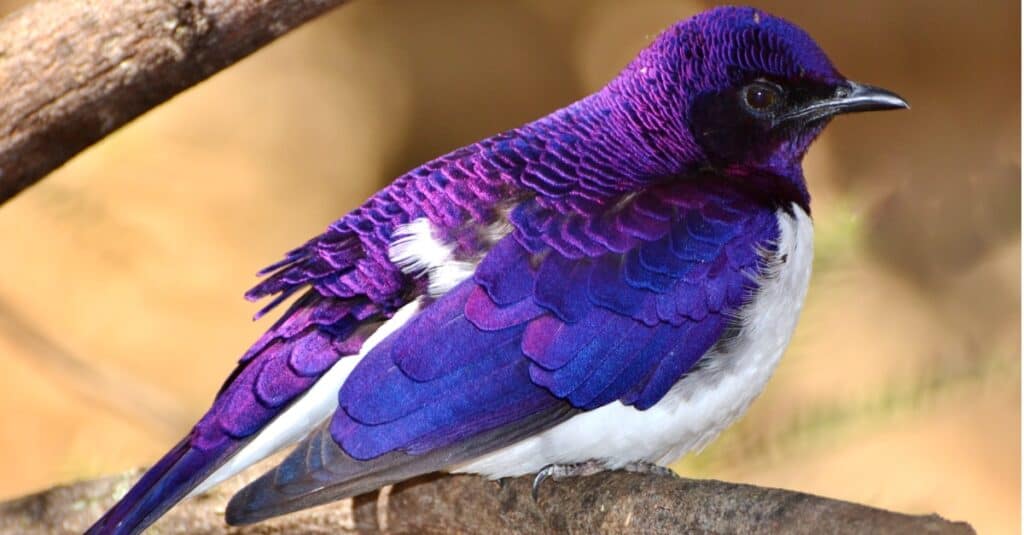
Characteristics: The violet-backed starling is a small starling with vibrant, iridescent plumage. Males are white below and bright violet above, while females are streaky brown with no bright coloring. Additionally, they feature black bills, black legs, and yellow eyes.
Location/Habitat: They live in Sub-Saharan Africa, where it is a relatively common bird. These birds inhabit arid open woodlands, clearings, and gallery forests.
5. Purple Honeycreeper
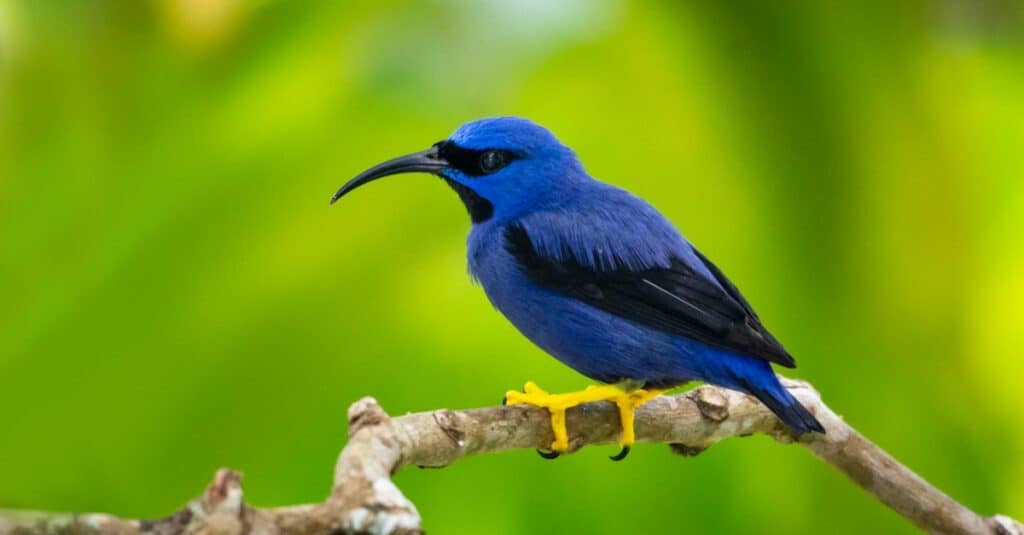
Characteristics: Purple honeycreepers belong to the tanager family. They are small colorful birds found in the Neotropics. Their long decurved bills and vibrant coloring are their most discernable features. Adult males are dark purple blue with black wings and tails.
Location/Habitat: This species lives in the northern part of South America in lowland forest canopies. You can also spot them in citrus and cocoa plantations.
6. Purple Grenadier
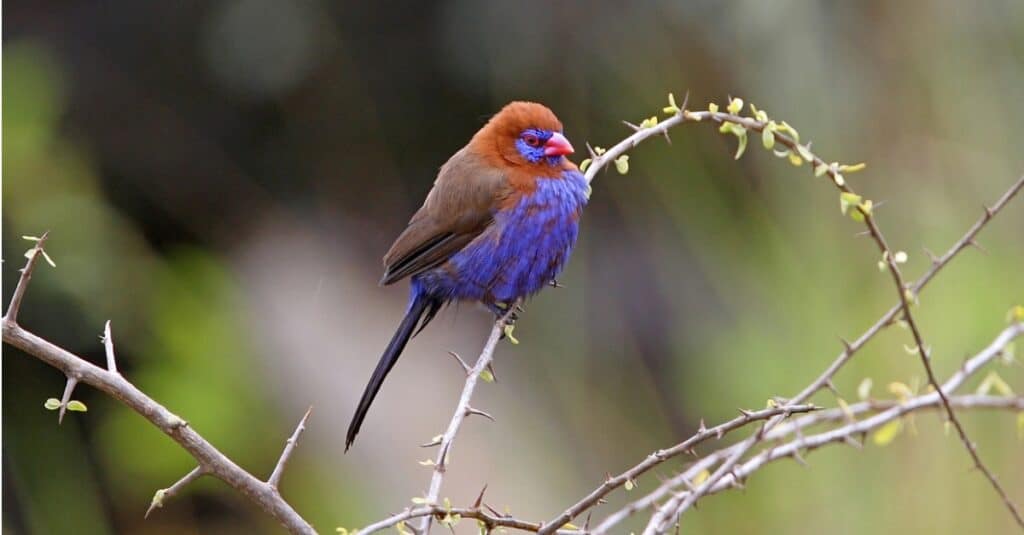
Characteristics: The purple grenadier is a small seed-eating bird with unique coloring. Males have red heads, a blue patch around their eyes, and a purplish-blue body. Additionally, their tails are black, and their bills are red. Females feature cinnamon-brown plumage and white barring.
Location/Habitat: This species inhabits tropical shrublands in Eastern Africa, including Kenya, South Sudan, Somalia, Uganda, Ethiopia, and Tanzania.
7. Varied Bunting

Characteristics: Varied buntings are small songbirds with long tails and thick conical bills. Adult males during the breeding season are a mix of deep purples and reds. However, outside of the breeding season, they feature dark brown plumage. Additionally, they have black on their faces and red eye rings.
Location/Habitat: These buntings live in the Southwestern United States and Mexico. And they are short-distance migrants that move to Southern Mexico during winter. They prefer dense cover in arid areas, like canyons, thorn forests, and desert washes.
8. Costa’s Hummingbird
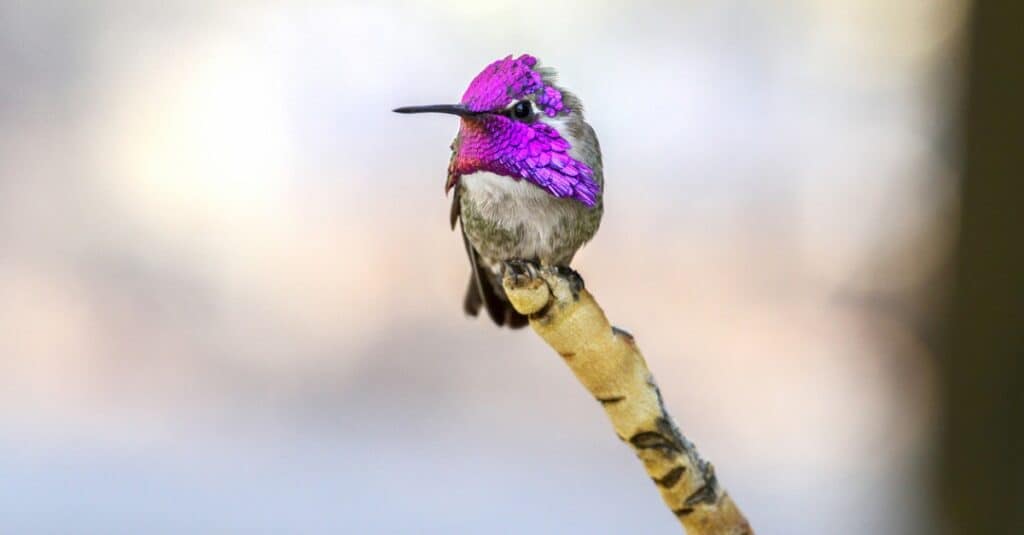
Characteristics: These small, plump hummingbirds have short tails. They are especially cute because their throat patch looks like a mustache. Adult males are olive green and gray but have purple iridescent crowns and throats. Females have more dull plumage, featuring green and white.
Location/Habitat: Costa’s hummingbird lives in the far Southwestern United States and Mexico along the coast. Examples of habitats include desert scrub, coastal scrub, and deciduous forests.
9. Purple Gallinule

Characteristics: the purple gallinule is a medium-sized wading bird featuring characteristic long legs and toes. They also have thick, conical bills and short tails. Adults are royal purple and dark green. Additionally, they have bright yellow legs and bright red bills. For this reason, they definitely stand out amongst their environments.
Location/Habitat: This species resides throughout the Southeastern United States, Mexico, Central America, and South America. They are abundant in South America, where they live year-round. They mainly inhabit freshwater marshes, but you can also find them on lakes, ponds, reservoirs, and rice fields.
10. Violet Sabrewing
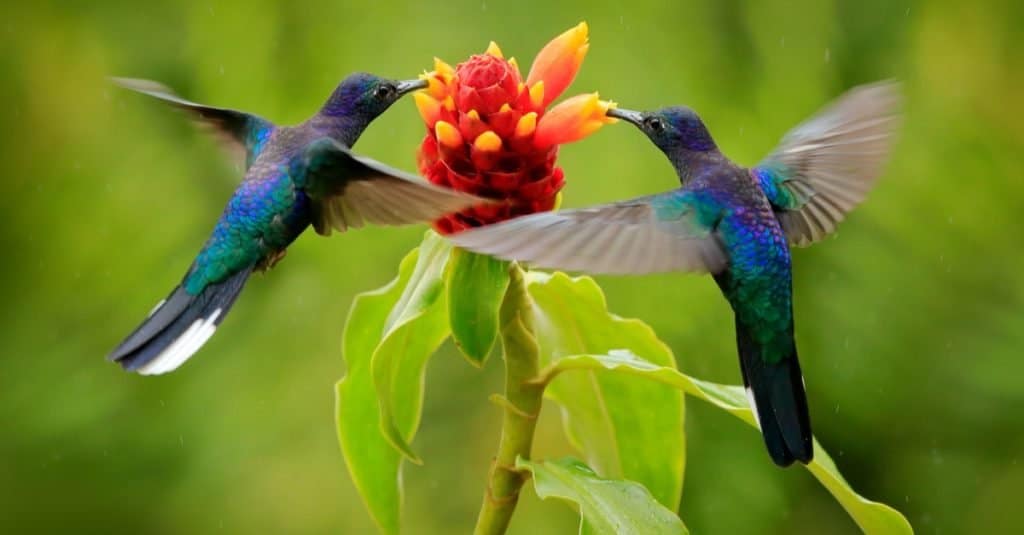
Characteristics: The violet sabrewing is a large species of hummingbird featuring long tails and long, decurved bills. Males are a mixture of glossy, iridescent blue, purple, green, and black. Additionally, their napes are metallic violet. Females are bronze and metallic green.
Location/Habitat: These hummingbirds live permanently in Southern Mexico and Central America. They inhabit humid evergreen forests, banana plantations, and gardens.
11. Gray-Headed Swamphen
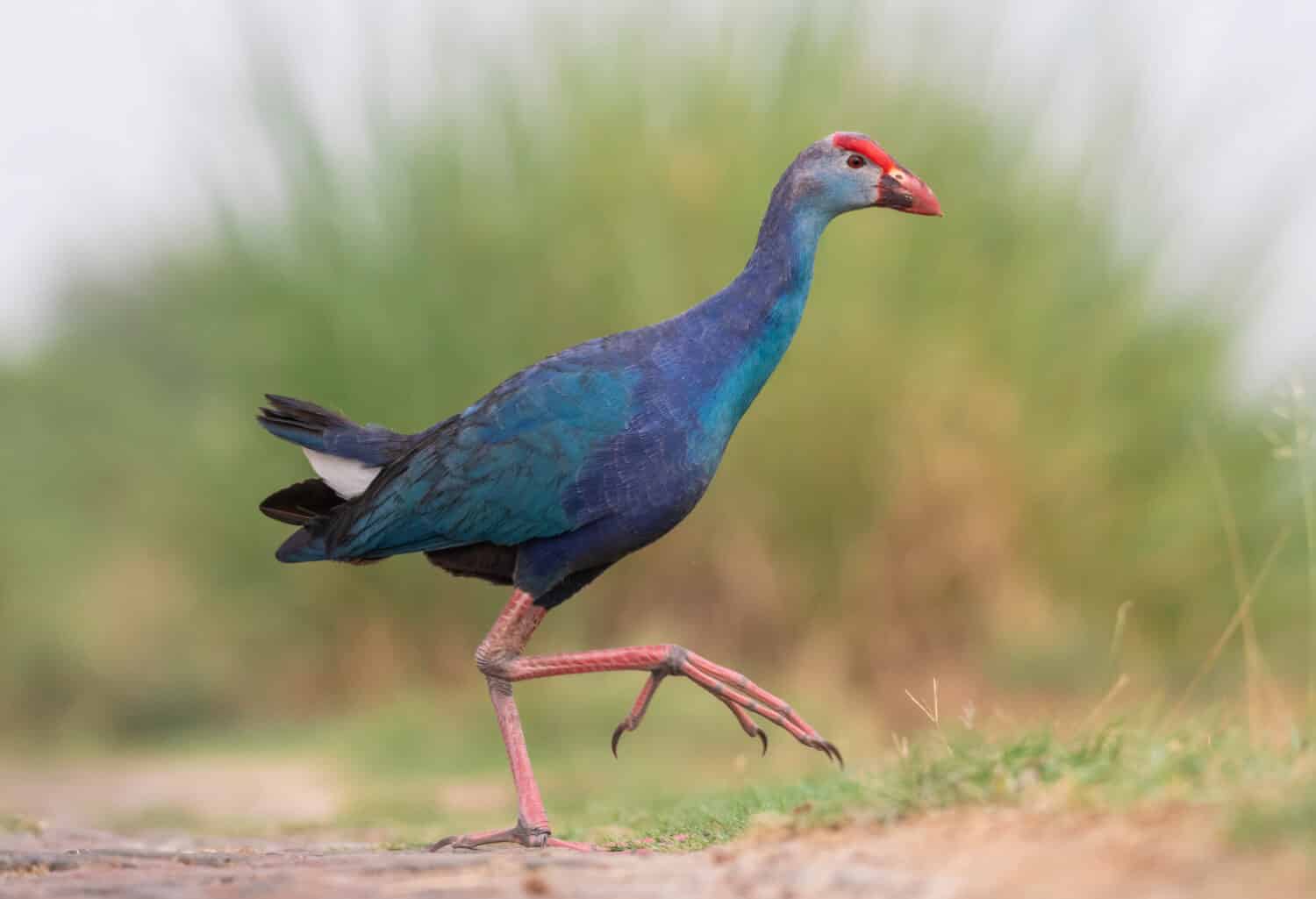
Characteristics: The gray-headed swamphen is a large wading bird known as a rail. They get their name from their chicken-like appearance. However, like other waders, they have long legs and toes. They also possess thick necks, heavy bills, and short tails. Their bodies are a mix of green and purple. Additionally, they feature bright red bills and frontal shields.
Location/Habitat: They have a very small range in the southern tip of Florida, where they live year-round. These rails live in many of Florida’s wetlands, including marshes, sloughs, ponds in golf courses, and artificial wetlands. However, they tend to avoid saltwater wetlands.
12. Violet-Crowned Woodnymph
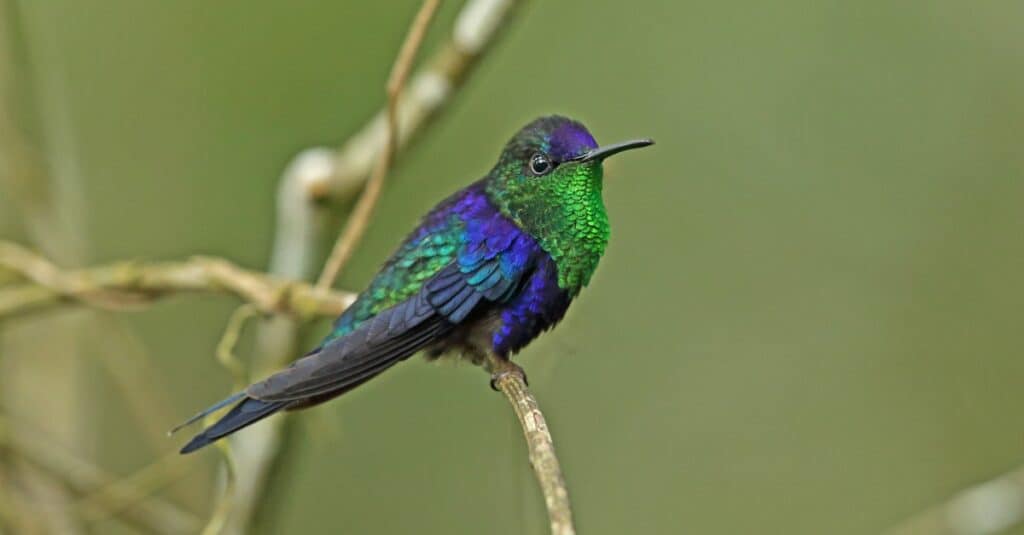
Characteristics: The violet-crowned woodnymph is a long hummingbird featuring slender bodies and long bills. Males are vibrant and metallic, with violet, bronze, and green plumage. Their throats are so shiny they look like sequins. Females are gray and bluish-green and are not as iridescent.
Location/Habitat: This hummingbird is found in the northern tip of South America, from Belize to Peru. They live in the interior and edges of humid forests. But you can also find them in cacao plantations and gardens. Violet-crowned woodnymphs are considered emerald hummingbirds, and they belong to the Trochilidae family.








